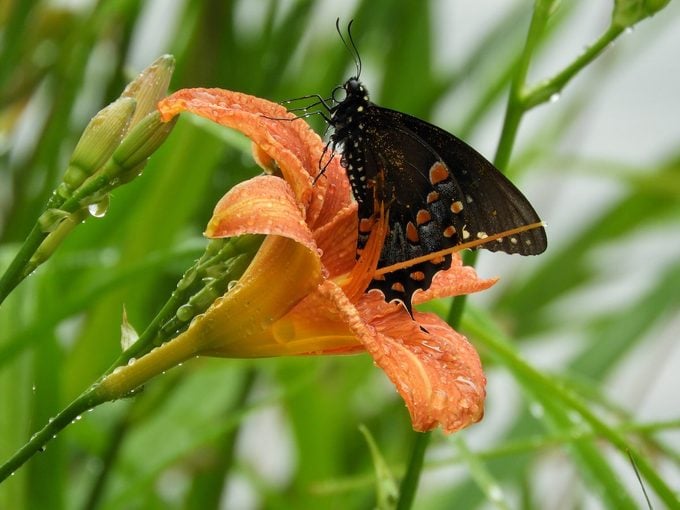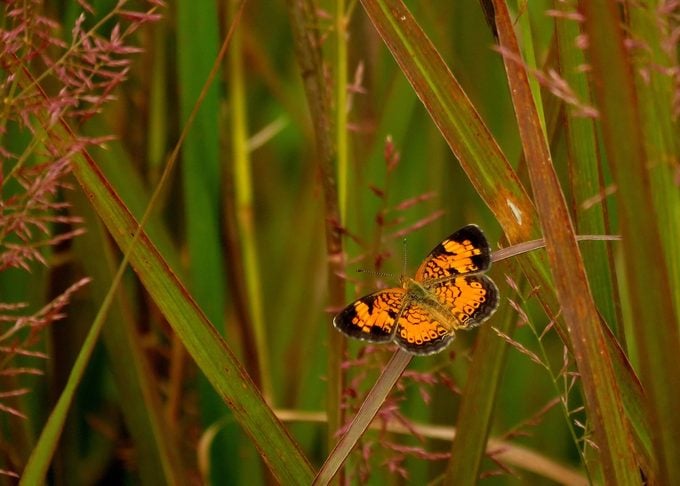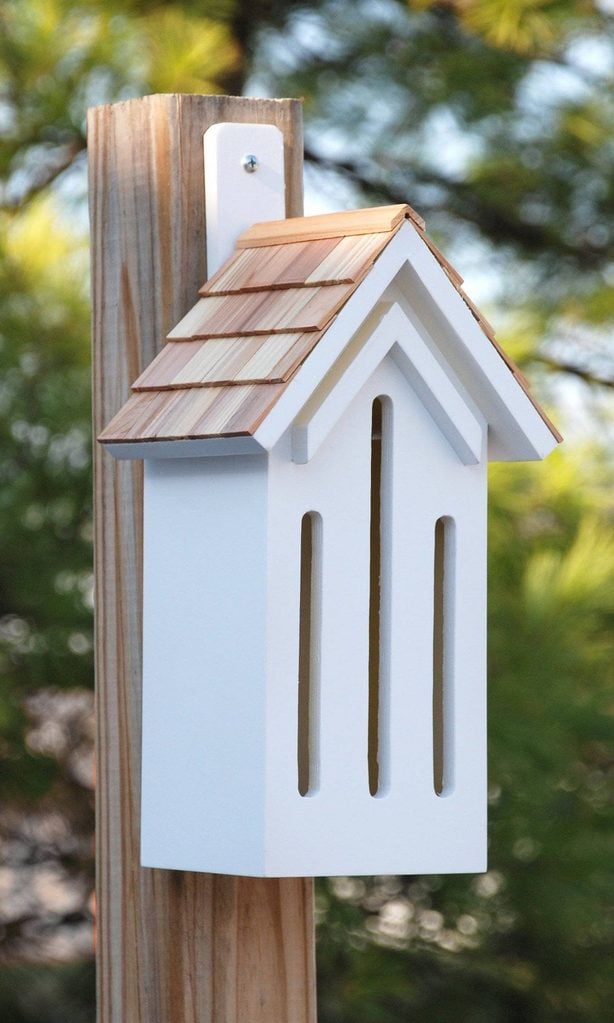Where Do Butterflies Go When It Rains?
Updated: Jul. 22, 2021
If a storm is coming, make sure your butterflies have safe habitat to ride out the weather. Find out where butterflies go when it rains and how to help.
Our editors and experts handpick every product we feature. We may earn a commission from your purchases.

Anytime a hurricane threatens here in the South, we get a lot of questions at the butterfly free-flight exhibit where I work about what we do to protect the butterflies from the storm. People wonder, “Where do butterflies go when it rains?” The answer? Butterflies are small and fragile creatures. Though, like all wildlife, they are equipped to handle some pretty nasty weather. Butterfly gardeners can help out a bit by providing the right kinds of habitat.
Just like humans, when rain threatens, butterflies seek shelter. When you’re a butterfly, a single raindrop is an awfully big deal. The average monarch butterfly weighs in at around 500 milligrams. The average raindrop weighs around 70 milligrams. Scientific American suggested that the impact of a raindrop on a butterfly would be similar to a human being hit with a water balloon with twice the mass of a bowling ball. Yikes!

Give Butterflies Places to Go When It Rains
Butterflies look for shelter from rain when the skies start to grow dark. They cling to the undersides of leaves, climb deep into tall grasses, or tuck themselves into cracks of rocks or trees. This is also how they protect themselves from strong winds. Their feet are capable of a surprisingly strong grip, and as long as they stay still in their sheltered spot, they’re likely to ride out the storm just fine. (Caterpillars do much the same thing, although they seldom stray far from their host plants.)
Of course, extremely severe weather can have an impact on butterfly populations. A large hurricane may destroy habitat, especially on islands and coastal areas where salt water flooding may kill host and nectar plants. In the Florida Keys, both Schaus Swallowtails and Klot’s Palatka Skippers have very limited ranges, and when hurricanes like Andrew destroyed much of their habitat, their populations began to struggle. Most butterflies have much larger ranges, though, and if they experience die-off in one area due to a storm, butterflies from nearby unaffected areas will quickly move in and repopulate when the habitat recovers.
As a butterfly gardener, you can help pollinators during stormy weather by making sure your garden has places for butterflies to go when it rains. Trees (dead or alive), tall grasses, and even rock piles provide great places for butterflies to hide during bad weather. Butterflies also use these shelters to roost at night, when they rest.

What About Butterfly Houses?
You’ve probably seen butterfly houses advertised or sold along with bird houses. They are small wooden houses with slits for butterflies to crawl inside, and perhaps with perches for them to cling to. Though you can buy these ready-made wooden butterfly houses, you’ll find butterflies are more likely to use natural areas like tall ornamental grasses or sturdy shrubs.
“Are butterfly houses more wishful thinking than practical? asks Sue Gronholz of Beaver Dam, Wisconsin. Birding experts Kenn and Kimberly Kaufman said, “While most kinds of butterflies survive through the winter in the egg, caterpillar or pupa stage, a few hibernate as adults. Examples include mourning cloaks, commas, question marks and tortoiseshells. These hibernating adults usually seek out bark crevices or other sheltered spots, but they’ll also use butterfly houses that feature vertical grooves cut deep into the wood. Even if they use your butterfly house, you may not see them as they slip inside sometime in fall and stay for weeks. So it’s hard to gauge their effectiveness, but it doesn’t hurt to put one of these shelters near your garden.”
Next, check out expert tips for watching and photographing butterflies.
